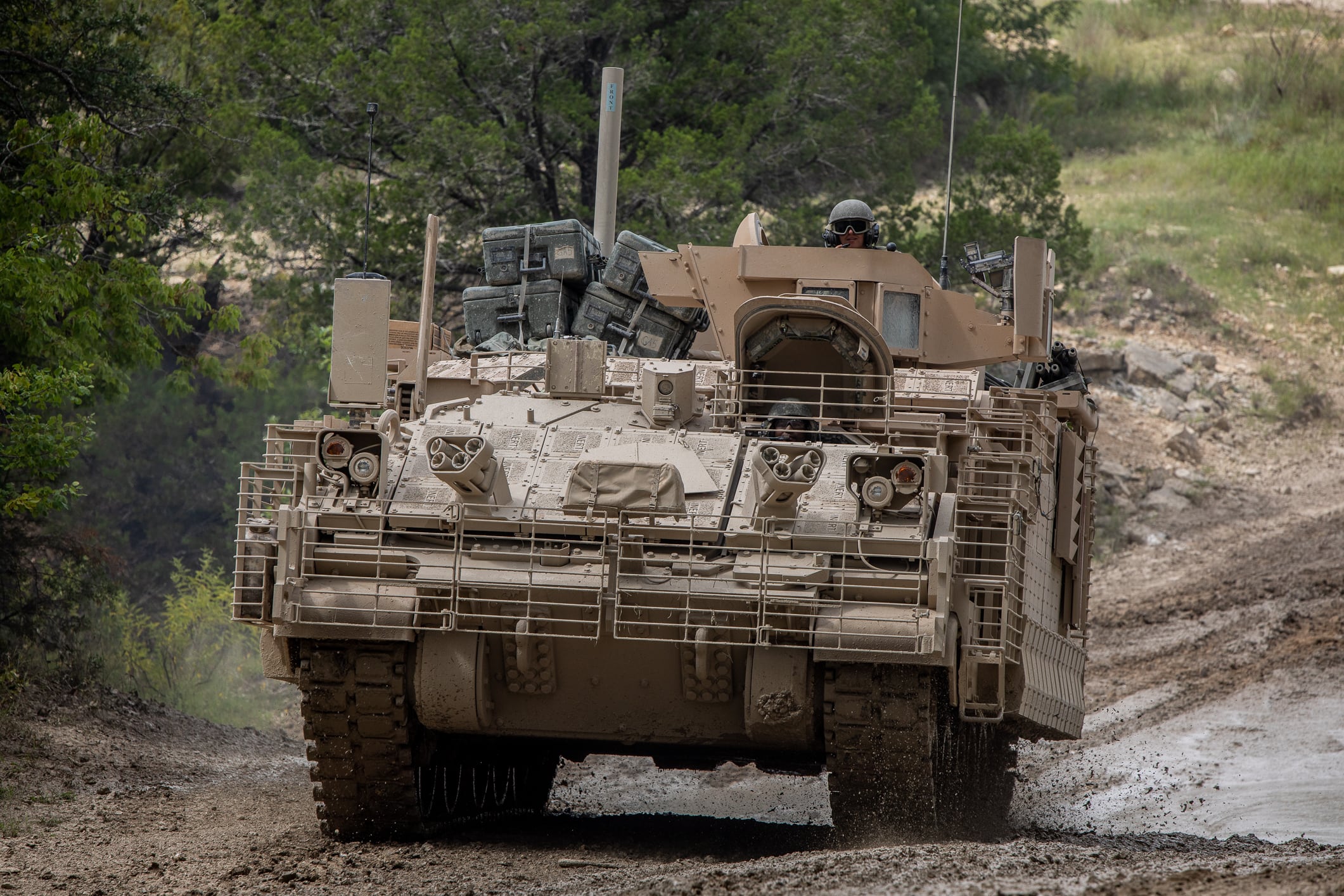WASHINGTON — The U.S. Army is shaking up its approach to a long-range electronic warfare, signals intelligence and cyber system, after considering how fights across many different environments may play out.
The Terrestrial Layer System-Echelons Above Brigade, or TLS-EAB, is envisioned for use by larger Army formations including divisions and corps with thousands upon thousands of troops and extensive firepower. The system is considered a key part of the service’s “deep-sensing” playbook, or the ability to identify, monitor, target and strike opponents from farther distances and with greater precision.
Mark Kitz, the leader of the Program Executive Office for Intelligence, Electronic Warfare and Sensors, or PEO IEW&S, said the Army is “evolving our acquisition approach,” specifically for flexibility. Targets and topography in the Indo-Pacific, where the U.S. could come to blows with China, and Europe, where it could clash with Russia, are radically different, for example.
“I don’t think we’re going to get to production with an EAB capability,” Kitz said during the virtual C4ISRNET Conference on April 26. “I think we’re going to build tailored solutions to the combatant commands we’re going to operate in, and iterate that over and over and over again, so that we build, sort of, a specific solution for the different type of contested and congested environments we’ll see.”
The TLS-EAB might not be well-suited for the Family of Medium Tactical Vehicles in the Indo-Pacific, Kitz said. In Europe, where far less island-hopping is required, the heavy-duty trucks might be the best option.
RELATED

“INDOPACOM looks very different than Africa, looks very different than anywhere,” he said. “We can’t just cookie cutter a solution that’s going to marginally work in that combatant command.”
Defense officials consider China and Russia to be serious national security threats. Both have invested in military science and technology, and are thought capable of hampering or withstanding U.S. military communications, targeting and attacks.
The Army in August inked separate deals with Lockheed Martin and General Dynamics Mission Systems for TLS-EAB concepts and demonstrations. The first phase was valued at $15 million over 11 months. Lockheed and General Dynamics are among the top five largest defense contractors in the world when ranked by revenue, according to Defense News analysis.
Kitz said much opportunity exists for both industry and government partnership as TLS-EAB is roughed out and realized.
“We’re keeping an open mind,” he said, “and trying to come up with the right acquisition approach that gets the right capability for our commanders in each of those combatant commands.”
Colin Demarest was a reporter at C4ISRNET, where he covered military networks, cyber and IT. Colin had previously covered the Department of Energy and its National Nuclear Security Administration — namely Cold War cleanup and nuclear weapons development — for a daily newspaper in South Carolina. Colin is also an award-winning photographer.








